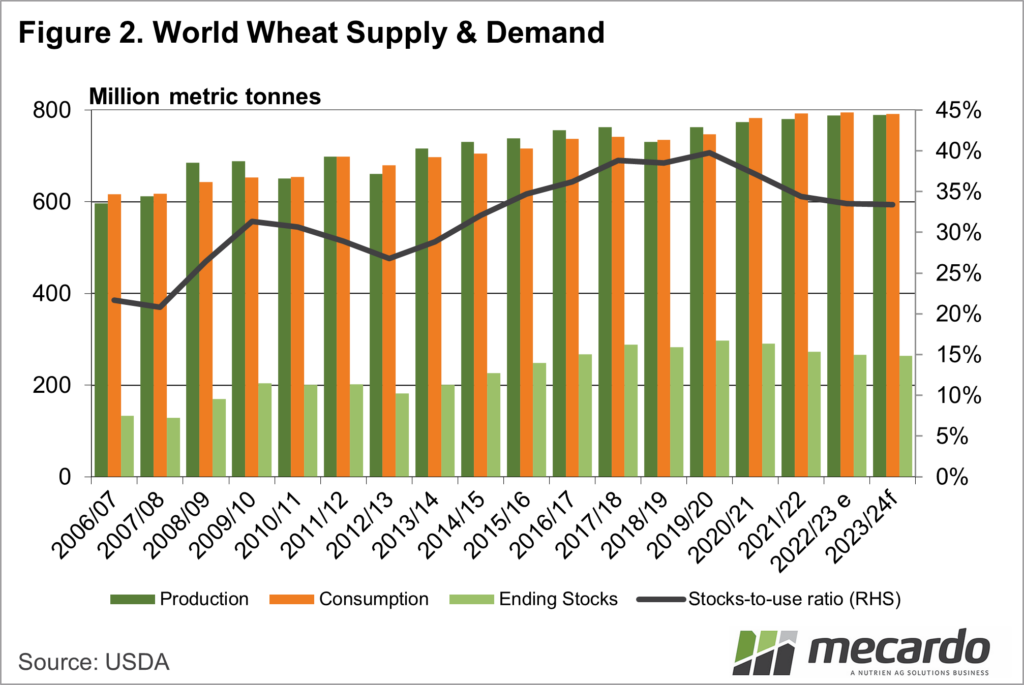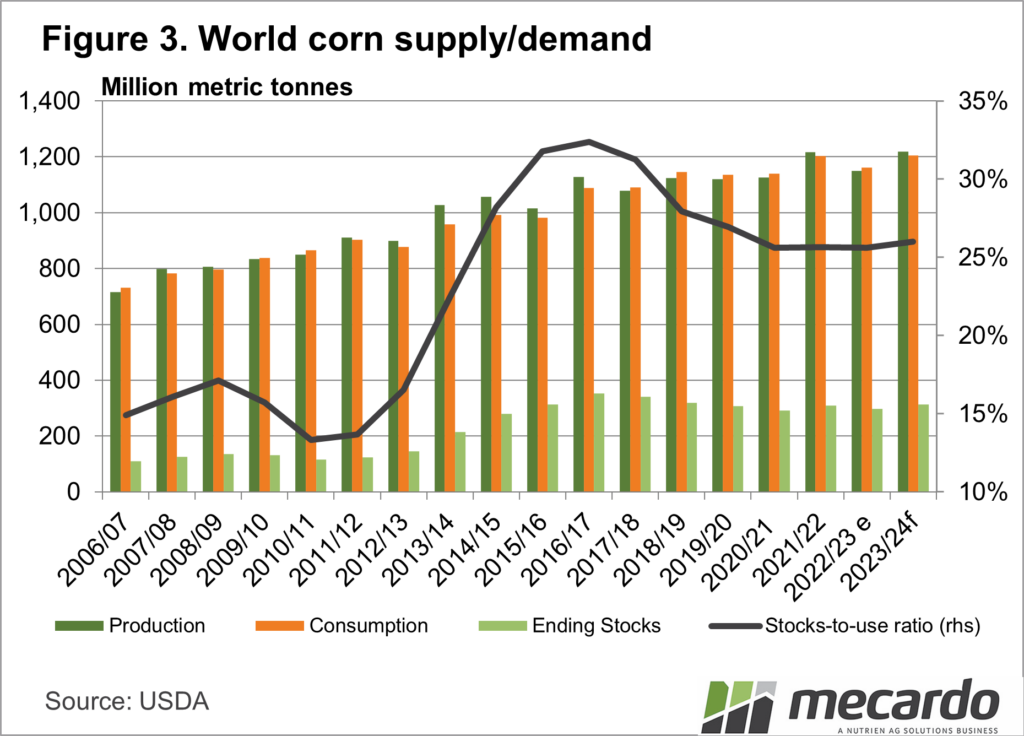The May release of the United States Department of Agriculture (USDA) World Agricultural Supply and Demand Estimates (WASDE) report is one of the most anticipated reports to come out of the USDA each year. The May WASDE gives the first look at supply and demand estimates for the coming season and sets a benchmark for markets.
Markets don’t tend to react to the absolute numbers in the WASDE, they are more sensitive to the difference between the forecasts and what ‘analysts’ expectations were. Before the WASDE report is released analysts predict what the WASDE will forecast. If the analysts get it wrong, the market can swing wildly. If analysts get it right price movements are more benign.
The headline numbers for the world supply and demand of wheat, corn, and soybeans are shown in Figure 1. Wheat production is forecast to be largely steady on last year and is again not going to meet consumption. This means stocks will decline marginally, and the stocks-to-use ratio will fall slightly.
The stocks-to-use ratio is an important measure of supply versus demand. Figure 2 shows that for wheat, the stocks-to-use ratio is forecast to fall to a 9-year low. A weak stocks-to-use ratio will no doubt maintain support for prices through the year.
Global Corn production is forecast to lift significantly and gain 6% in the coming year, outstripping consumption and seeing growth in global stocks of 5.2%. Figure 3 shows that if it comes to fruition, corn production will be a new record in 2023/24. However, strong consumption means that the stocks-to-use ratio will only rise slightly, remaining well below the peaks of 2016-17.
Global oilseed production is forecast to have a very strong increase, with a very strong 17.9% rise in world-ending stocks. Much of the increase in production and stocks are expected to come from South America, which won’t plant crops until the end of the year, so there is plenty of uncertainty in these projections.
What does it mean?
The WASDE was released on Friday morning, and it initially saw wheat prices jump higher. With more digestion yesterday, wheat rallied again, but only to a 10-day high. Increasing corn stocks is expected to provide strong competition for wheat in the feed space, and keep a lid on prices.
Corn and soybean futures both moved a little lower on Friday, but recovered Monday. The projections were largely in line with analyst’s expectations, and as such the market will now keep watching the weather and the war.
Have any questions or comments?
Key Points
- The much anticipated USDA WASDE report was released on Friday.
- Wheat stocks are expected to decline, with corn and oilseeds increasing strongly.
- Projections were largely in line with expectations, causing only small moves in the markets.
Click on figure to expand
Click on figure to expand
Click on figure to expand
Data sources: USDA WASDE, ASX, CME, Mecardo















